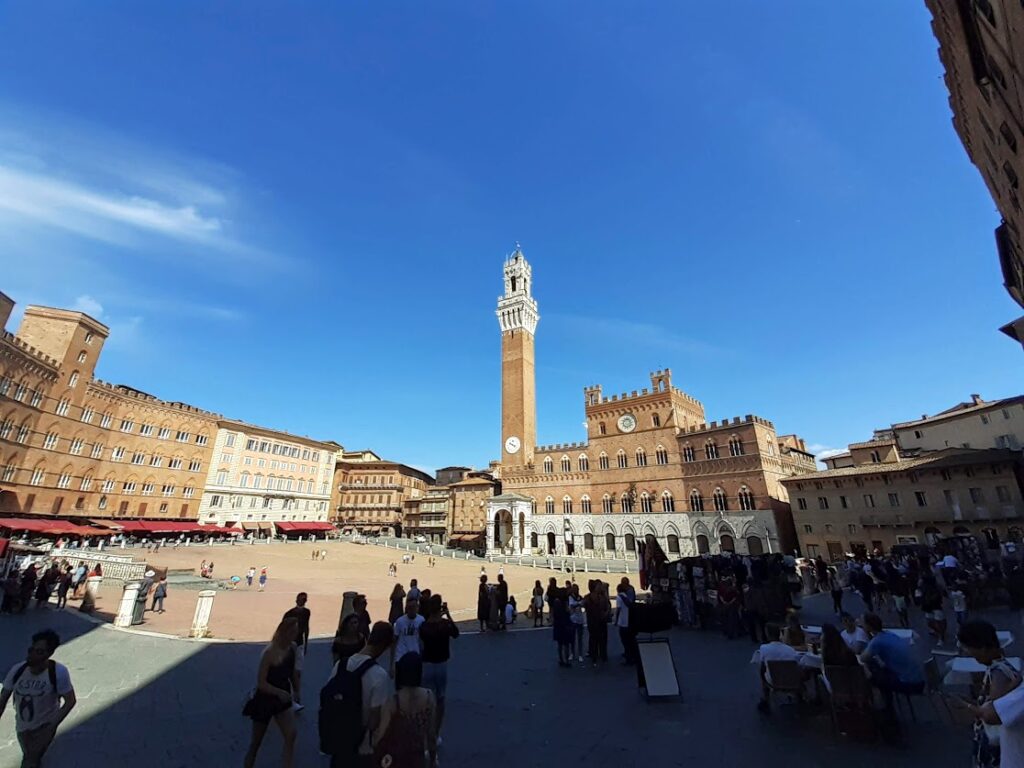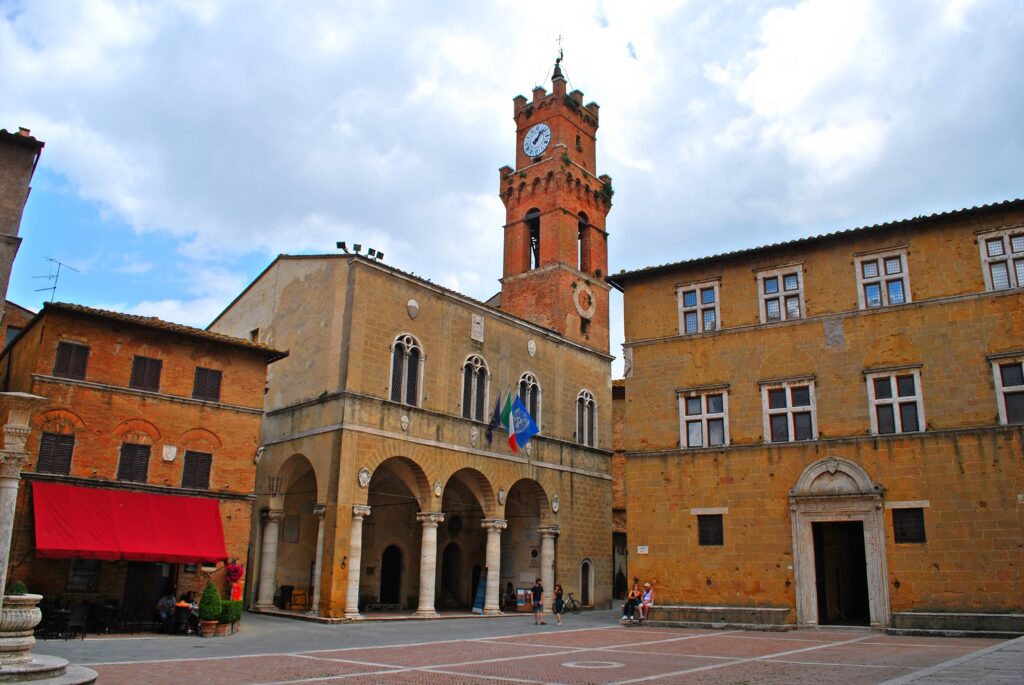
Pienza
It’s one of the most beautiful places in Tuscany, rightfully returned to the Unesco sites in 1996, and boasts a remarkable history. It was the first city in Europe to be “planned”, that is, it has a historic center built according to a well-defined master plan around the medieval core. All this is due to an extraordinary character, Pope Pius II, Enea Silvio Piccolomini, born in Pienza, who wanted to make his village of origin an architectural center inspired by the model of the ideal city, hoped for by Renaissance aesthetics. Between 1458 and 1462 the most beautiful monuments and buildings of Pienza were built, supervised by the great architect Leon Battista Alberti and built by Bernardo Gambardelli known as Rossellino, which today we can admire around Piazza Pio II, one of the most significant examples of geometric perfection and perspective completeness. READ THE MUSEUMS OF PIENZA
Montepulciano
For those who love art, Montepulciano is an unmissable destination, full of enchanting views and immersed in a countryside made up of vineyards and olive groves. It is not part of the Val d’Orcia, but overlooks the Val di Chiana. It is certainly one of the most beautiful towns in Italy, built according to particular urban planning criteria, with the Piazza Grande at the top of the hill. There are numerous ancient cellars to visit and in which to taste the Nobile wine, a product of excellence, and there are many delicious restaurants, inns and wine bars in which to taste the typical products of this land. The history of this place is important and studded with prestigious names, such as Antonio da San Gallo who designed the Renaissance temple of San Biagio, which stands isolated from the urban center, and also Palazzo Contucci, Palazzo Ricci (now home to the famous Renana Academy) and the complex of the Medici Fortress.
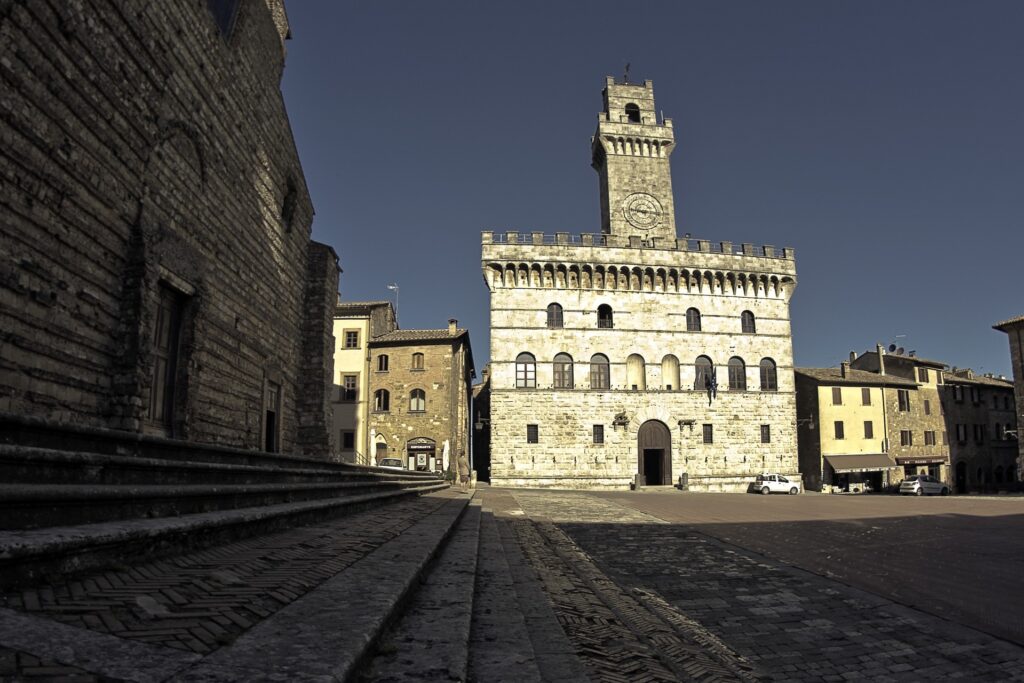
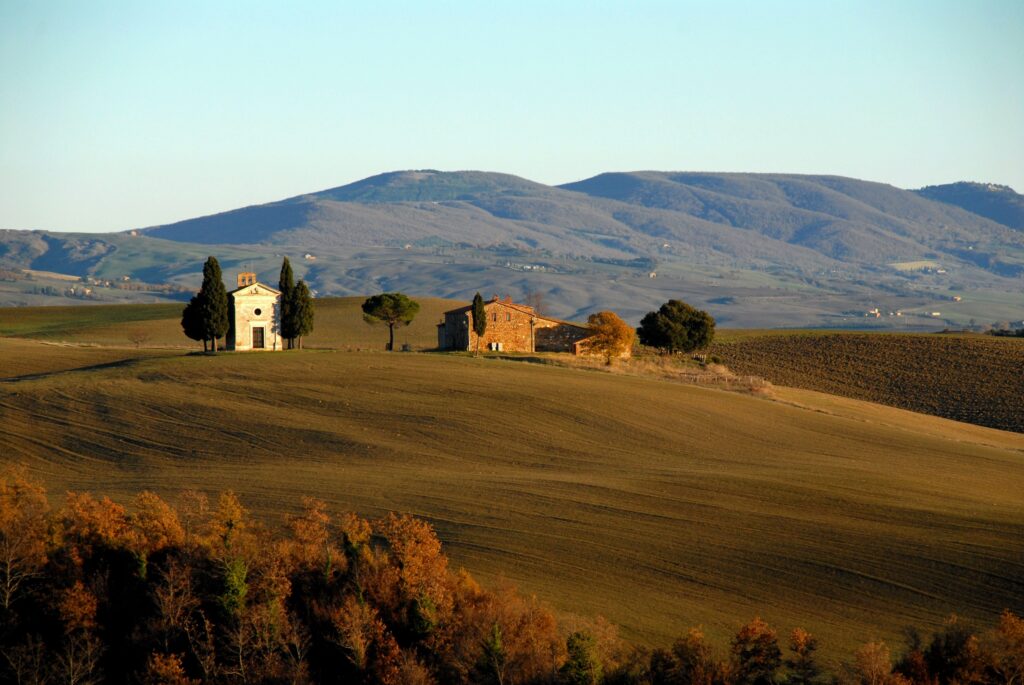
San Quirico
It is one of the municipalities of the Val d’Orcia Park. Rich in history and splendid buildings, it is absolutely worth a visit for the Collegiate church built on an ancient parish church, one of the highest examples of Gothic art, with splendid portals and Lombard-style architecture. A real gem, still investigated and studied by art historians. Another unmissable place are the Horti Leonini, a perfect example of a classic Italian garden, built on the Medici’s land, and today unchanged, it occasionally hosts interesting outdoor exhibitions and the chance to get lost in the hedge maze that characterizes it. The chapel of the Madonna di Vitaleta, symbol of the Sienese territory and perhaps the most photographed, is located on a dirt road. This church was renowned for housing a statue of the Madonna dating back to the Renaissance era, sculpted by the artist Andrea della Robbia.
Bagno Vignoni and Rocca d'Orcia
It is one of the most popular locations for the evocative atmosphere given by the splendid Renaissance pool located on the central square, from which the hot thermal waters continually flow. The steam that is released turnish the beautiful buildings surrounding the pool, creating a fairytale effect. The ancient loggia of Santa Caterina embellishes the view which in fact attracts myriads of visitors. You will find around the so-called “accumulation tanks” and “the gorello”, with free access to the thermal waters that also feed the spas, now splendid hotels. A great panorama appears from various points of Bagni Vignoni that can be appreciated by taking one of the many possible walks: first of all the one that leads in the wake of the Via Francigena, to the Ripa d’Orcia, a castle overlooking the river and surrounded by woods that which leads to the ancient original nucleus of Vignoni Alto, which climbs up a suggestive white road, the one that leads to the village of Rocca d’Orcia. READ THE ANCIENT BATH
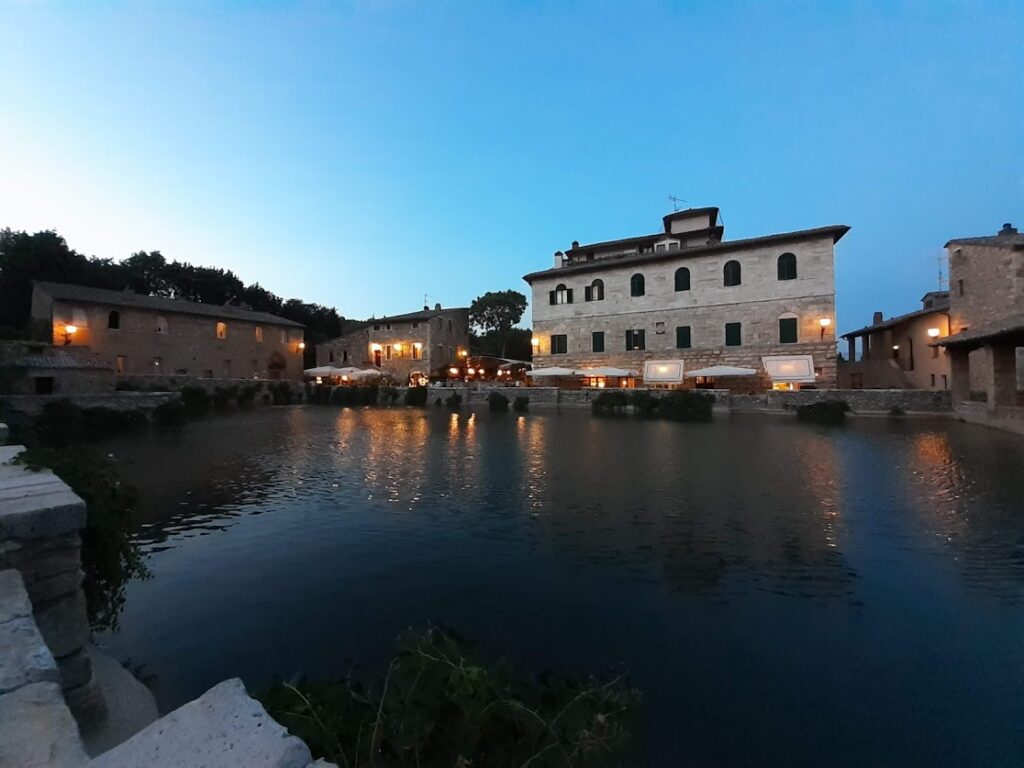
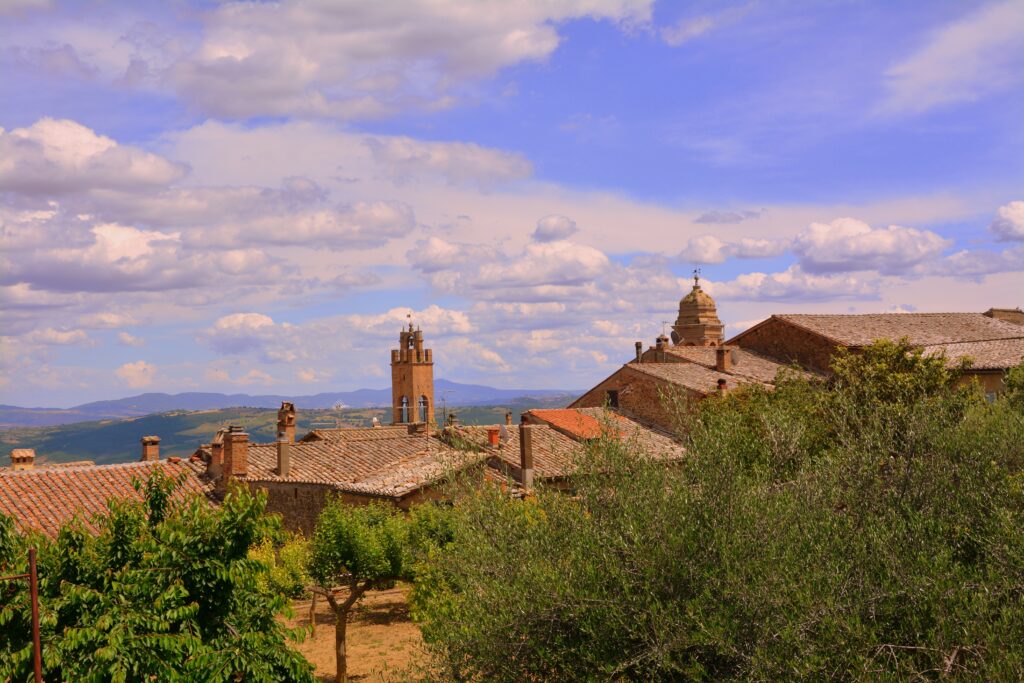
Montalcino
The name of Montalcino is linked above all to the production of the famous Brunello wine, a product of excellence in this corner of Tuscany. Here are the magnificent Sangiovese vineyards that have given prestige to the village and created a brand exported all over the world. The Argiano Castle, where cultural meetings and tastings are combined, and the Tenuta Banfi certainly deserve a visit. Also worth seeing is the characteristic long and narrow tower of the Palazzo dei Priori, seat of the Municipality, which overlooks the main square known as Piazza del Popolo, with its beautiful Gothic loggia. In addition, the Palazzo Vescovile and the churches of Sant ‘Agostino, Sant’ Egidio and San Francesco. A few kilometers from Montalcino, a beautiful road leads to the Abbey of St. Antimo, an absolute masterpiece of 12th century Romanesque art.
Radicofani
Ancient lookout of the Republic of Siena, it is built on a basalt rock of 800 meters, so it offers a spectacular view of Mount Amiata, Mount Cetona and the whole Val d’Orcia. It is certainly one of the most characteristic villages of the Valdorcia Natural Park, perhaps the most authentic. Located along the ancient Via Francigena, Radicofani has long been disputed between Siena, Florence and the Papal State for obvious reasons of commercial traffic and strategic position, and therefore boasts a controversial and complex history, which has left important traces from a cultural point of view. First of all the imposing keep that rises on the top of the cliff and which can be seen from miles away, giving the village a fairytale look. Today it can be visited and allows you to breathe the medieval atmosphere thanks also to the themed shows that are offered to the public, in which Gothic fights and parades are relived.
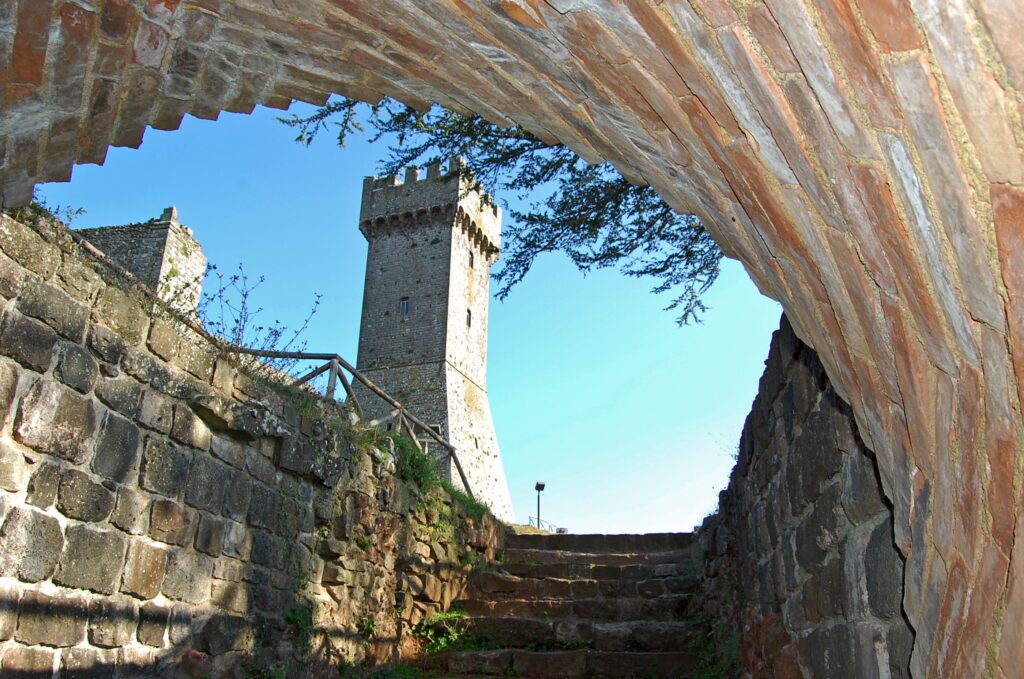
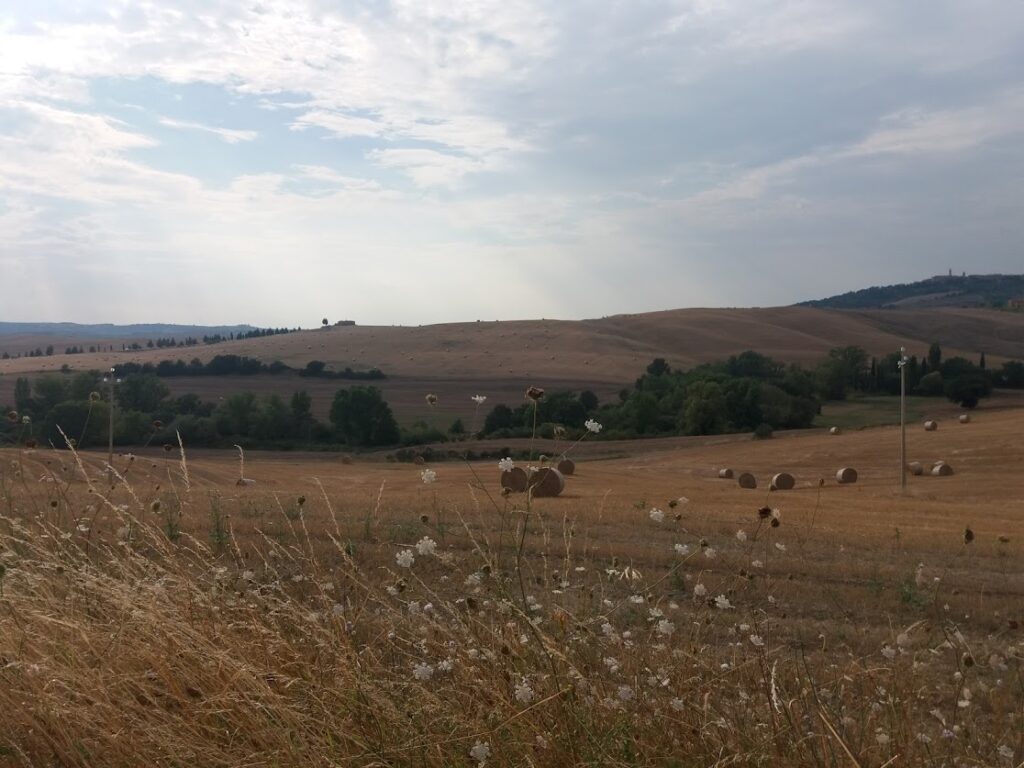
La Foce and Castiglioncello sul Trinoro
La Foce is a historic residence born from an old farm, owned by the well-known Origo family, which overlooks one of the most beautiful viewpoints in the area. For those who love trekking or e-bikes, it is a mandatory stop for the beauty of the route that also starts from Monticchiello and then continues into the heart of the Val d’Orcia. The garden of the villa can be visited, an admirable example of the “Italian style”. La Foce has a special history for Valdorcian people, as it represented a precious testimony of altruism and generosity in the dark periods of the war. After La Foce it is possible to reach another enchanting place, the one that has the most spectacular view over the valley: Castiglioncello sul Trinoro. It is a small medieval village that served as a lookout under the rule of the Sienese Republic. In recent years, archaeological excavations have brought to light the foundations of the ancient fortifications. To see the Romanesque church of Sant’Andrea, the Town Hall and the village.
The Via Francigena
The Via Francigena is 1800 km long and, in the Italian section, crosses seven regions, 140 municipalities, for a total of 44 stages. It was Sigeric, the archbishop of Canterbury, who, on going to Rome to visit Pope John XV in 990 AD, described the Via Francigena and marked the official route in his diaries. 4 of these stages are located in Val d’Orcia: X, Radicofani (Sce Petir in Pail – Church of San Pietro Apostolo); XI, Gallina – Castiglione d’Orcia (Abricula – Le Briccole, an ancient hospital); XII, San Quirico d’Orcia (Sce Quiric); XIII, Torrenieri – Montalcino (Turreiner). The cycle-touristic route is easy thanks to the constantly updated signs, each stretch of road is defined for practicability, difficulty, morphological characteristics. The navigation system on an interactive map allows you to view and search for a whole series of useful information. A road to be covered both on foot and by bike, which goes back on ancient steps to rediscover centuries of history that still belongs to us.
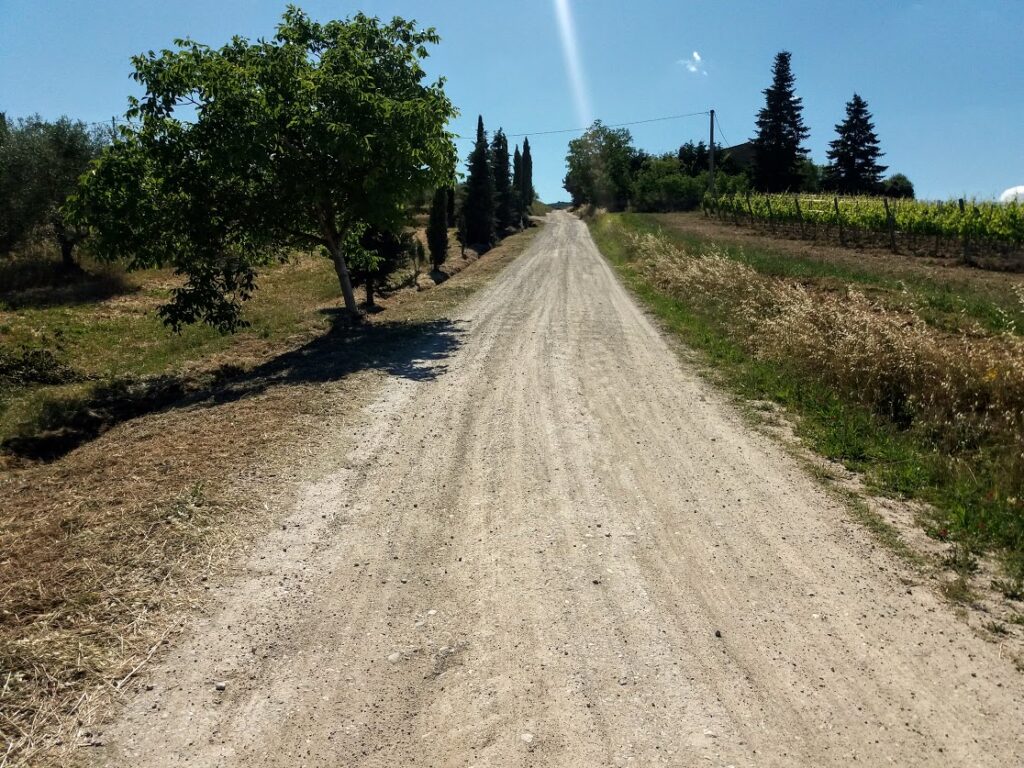
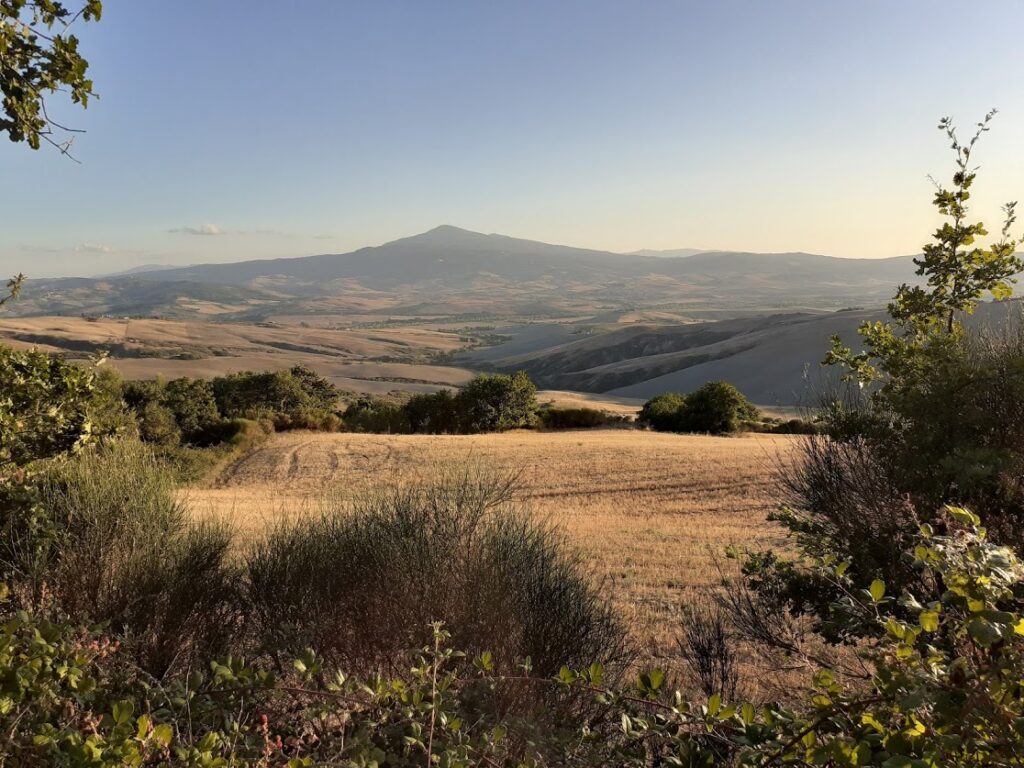
Mount Amiata
Rising to 1738 meters Monte Amiata offers beautiful views from all sides, you can look through the valley. Cold in the morning mists when the snow fell, emerald green on summer afternoons, with its volcanic cone that has been silent for hundreds of years, it stands proud and placid. It offers beautiful visions to photographers and certainly opportunities for fun to those who decide to join it. Amiata is a ski resort that gathers skiers from all over central Italy, being one of the highest peaks. On its slopes the wooden huts immersed in the silence of the beech and chestnut trees, higher up the shelters where you can eat mushrooms at any time of the year. There are many paths for those who love trekking and e-bikes, and many beautiful places that arise around it, old villages such as Santa Fiora, Abbadia San Salvatore, Vivo d’Orcia. Not only for mushroom makers then, but for those who love nature and walk in the quiet of centuries-old woods.
Siena
Located in the heart of Tuscany and surrounded by hills, it is certainly one of the most beautiful medieval cities in Italy. According to the legend it was founded by Senio, son of Remo and in this regard along the city there are several statues depicting Romulus and Remus suckled by the she-wolf. Piazza del Campo has been the central nucleus of Siena since the time of the Romans, who had their Forum here. The square is dominated by the red Palazzo Pubblico and its tower, called Torre del Mangia. The Palazzo Pubblico, as well as the Cathedral of Siena, was built during the Government of the Nine, a period of maximum splendor from both an economic and cultural point of view. The Palazzo still houses the offices of the Municipality, similarly to Palazzo Vecchio in Florence. From the internal courtyard of the Palace you can access the Civic Museum and the Torre del Mangia, at the top of which, after climbing the 500 steps, you can enjoy a splendid view of the city. READ MORE…
